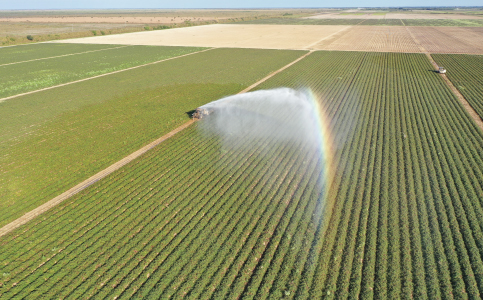Miami-Dade urges feds to push down loan interest on farmland
Advertisement

County commissioners are urging the Biden administration and the US Department of Agriculture to act to lower interest rates on loans for the purchase of land for agricultural use.
The request came only one day before the Feds announced a record .75 percentage point increase in interest rates to slow the economy and put brakes on inflation.
A resolution sponsored by Sen. Rene Garcia, adopted in a 9-0 vote June 15, directs the county’s federal lobbyists to advocate for the proposal and the Office of Intergovernmental Affairs to amend the county’s 2022 Federal Legislative Package to include this item.
The affordability of land acquisition for agricultural use depends in significant part on loan interest rates, the document says. “Rising property values and rising loan interest rates may make it more difficult for farmers and would-be farmers to purchase land for agricultural use.”
“My goal is to try to help in whatever way we can the agriculture community here, which is one of the largest industries that we have,” Sen. Garcia told Miami Today. He said he recently visited the South Dade community and one of the biggest concerns farmers raised was the high costs for the purchase of agricultural land and the rising interest rates.
When asked if he knew of a precedent of the federal government lowering interest rates for an economic sector, Sen. Garcia said he didn’t, “but I see what they’re doing with suspending the student loans; they’ve done it once before, they’re talking about doing it again. I don’t see why they cannot do that for the agricultural community.”
Although the proposal is feasible, it may be an arduous task to achieve. “Yes, it’s possible; it’s probably going to be a more arduous task than reasonable,” said David Druey, regional president for Centennial Bank.
“Could the government do it? In a broad way, yes. Are they going to probably do it? No, because it’s too difficult to put brackets around what that sector is and is not,” he added.
For instance, Mr. Druey said, a tree farm harvesting trees for the next 20 years is part of the agriculture industry and authorities would have to decide whether to include these types of businesses in such a proposal to lower interest rates.
“There are a lot of agriculture businesses that you would have to either include or exclude and the problem is trying to figure out where that line would be,” he said. “Tree farm, in my opinion, is one of the most extreme; it’s still in the agriculture business, they’re still growing trees, but it’s a 30- or 20-year lifecycle.”
Abbey Omodunbi, assistant vice president and senior economist for PNC Financial Services Group, said that usually when the Fed increases interest rates, it affects the entire economy, and no sector is excluded.
The US Department of Agriculture, through its Farm Service Agency, administers Farm Loan Programs that assist farmers in financing farm acquisition and operations, the resolution details.
Those loans include Farm Ownership Loans that may offer up to 100% financing and “are a valuable resource to help farmers and ranchers purchase or enlarge family farms, improve and expand current operations, increase agricultural productivity, and assist with land tenure to save farmland for future generations.”
As of June 1, the loan interest rates provided by the Farm Service Agency range from 1.5% for farm ownership down payment to 3.75% for farm ownership microloans, the official website of the service details.
In Miami-Dade County, about 63,233 acres of farms and rural land valued at $492 million are for sale, according to Lands of America, a website focused on the sale and purchase of lands.
In the 2017 Census of Agriculture performed by the National Agricultural Statistics Service of the US Department of Agriculture, the county had 2,752 farms with an average size of 29 acres per farm. The same fact sheet notes that 95% are family farms; 99% sell some type of crops, while only 1% sell livestock, poultry, and products. These farms contributed 11% of state agriculture sales.
More interest rate increases are anticipated as Fed policymakers said they expect them to climb to 3.4% by year’s end, as opposed to the 1.9% they were projecting in March.
Mr. Omodunbi forecasts an increase in interest rates by 50 basis points in July, 50 basis points in September, 50 basis points in November, and 25 basis points in December. “They will continue to increase interest rates until inflation is at the Feds’ 2% objective,” he said.
The most recent hike is expected to make an impact on the economy within the next 30 days, and up to a year from now.
“I think that you’ll see within the next 30 days whether this rate increase of 75 [basis points] was enough to slow down inflation, and if it’s not, the Fed has proved that they’ll do another 50 or 75,” Mr. Druey said. “I think there has to be another rate increase before you’ll see a slowdown that’s meaningful.”
“It’s a variable lag. There’s not a constant time. [It] could take six months, or could take one year,” Mr. Omodunbi said. He added that since the Fed started to increase interest rates earlier this year, inflation has been increasing, and that’s why they decided on 75 basis points instead of 50.
Mr. Omodunbi said PNC is closely monitoring economic data to see if there are any signs of reduced consumer spending, signs of reduced activity in housing, and they just reduced activity in several sectors.


